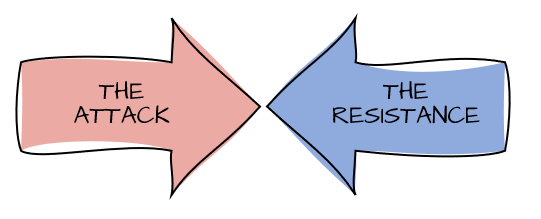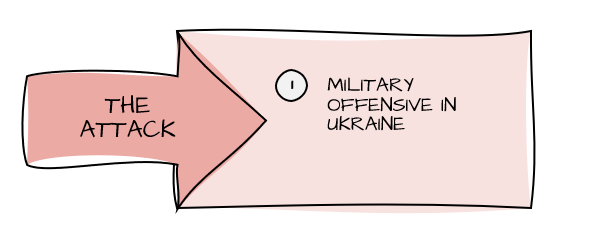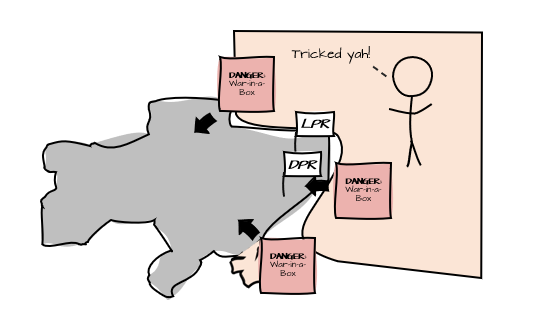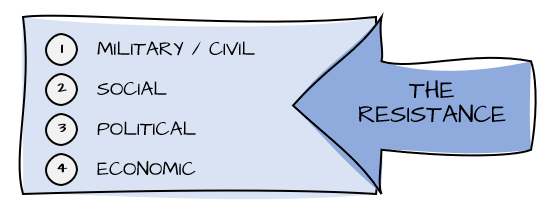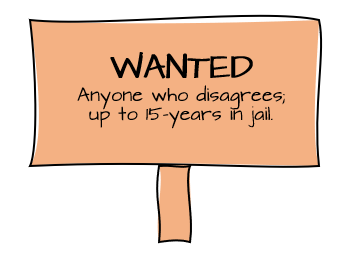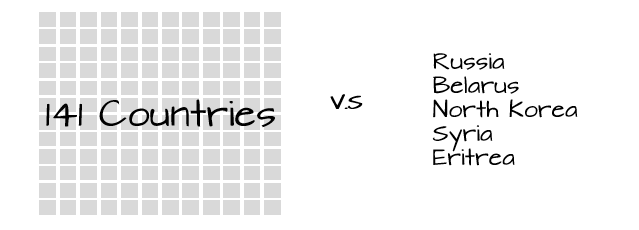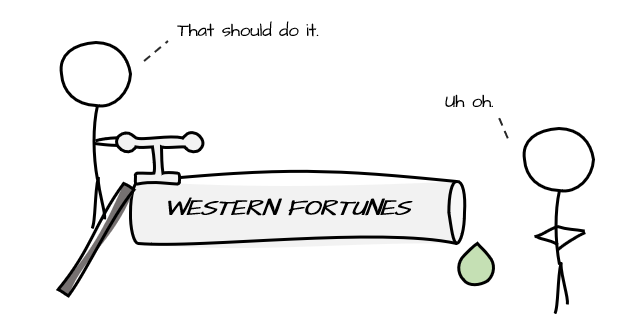So what’s happening Ukraine? Part 4: The situation so far
This is the fourth post in a series about the situation in Ukraine; they are chronological, so if you are just joining us, I’d start here: Part 1: How did we get here?
This series is not meant to be a definitive history, nor a comprehensive analysis of the conflict or either country. The goal is to help simplify a complex and important topic and provide readers with a baseline appreciation for the situation.
In the last piece we focused on the lead up to the invasion covering the period from 2014 until the first shots were fired in the early morning of 24 February. In this piece we will share what has transpired between those first shots and the time of writing this piece (13 March).
The simplest way to do this is to distill events down to two categories:
The Attack
The attack is the first and more straightforward part of the story, so we’ll start there.
The war Russia is waging in Ukraine is predominantly a military one.
ON 24 February the troops and supplies around the Ukrainian border that Putin claimed were not there for war, were ordered to enter the country and begin the attack. Go figure.
Russian troops entered Ukraine from the north in Belarus (towards Kyiv), from the northeast in Russia (towards Kharkiv), from the east in the LDR and DPR, and from the South in Crimea.
It is widely believed that Putin’s original plan was for the vast Russian forces to:
Advance quickly through the country in a matter of days, meeting little resistance
Capture Kyiv
Force a change of government in Ukraine, and install another pro-Russian one
Specifically, many suspect Putin plans to tap Viktor Yanukovych, who was the Ukrainian president that was deposed in the 2014 protests and fled to Russia.
Officially, Putin has refuted that Russia has “invaded” Ukraine, keeping to his line around the attack being a “special military operation” focused on stopping genocide and Nazi-ism mentioned in the last post.
As of this writing, Russia is slowly making ground in Ukraine. The advance and Russian control of Ukrainian territory looks something like this:
However, some notable cities have resisted falling under Russian control so far including Kyiv, Kharkiv, and Mariupo. For many of the cities that are occupied, the local residents are resisting and protesting on a daily basis.
The slow progress being made by the Russian army has seen them resort to more desperate measures to gain control of territory. There are credible reports suggesting that Russia has committed war crimes against the people of Ukraine, including but not limited to:
It is hard to say for sure what the human cost has been in this attack so far. In general, it seems as though Ukrainian and Russian sources are over-reporting one another’s casualties and under-reporting their own. Looking at some conservative third-party figures we can estimate the following:
At this point in the attack, Russia has slowed their ground advance. Instead, they have opted to surround major cities and launch missile attacks and air strikes, reducing many buildings to ruin.
THE RESISTANCE
Compared to the attack, the resistance is a far more complex situation. While the attack is primarily a military effort, the resistance consists of an array of tactics executed by various parties. We’ll break each of them down, starting from the direct military resistance in the epicenter of the conflict and expanding out into international reactions and sanctions.
MILITARY RESISTANCE
Immediately following the attacks at 6:00am Moscow time on 24 February, Ukrainian President Volodymyr Zelenskyy declared martial law in the country.
The same evening, Zelenskyy called for a general mobilization of all Ukrainian Males aged 18-60 years old to join the fight against the Russian invaders. He also called on Ukrainian men living abroad to return home and take up arms to defend Ukraine.
In the span of a day Ukraine effectively militarized its entire government, and much of its civilian population, to resist the invasion.
Has this method of resistance been effective? More than many expected it to be.
The resistance of Ukrainian armed forces, and its civilians, have been a significant factor that has challenged Russia’s plan for a quick invasion. The people of Ukraine are fighting ferociously to defend every inch of their country.
This certainly has come as a surprise to many Russian soldiers, who were told they would be greeted as liberators and met with flowers instead of Molotov cocktails.
Ukrainian President Zelenskyy - a comedic actor by trade - has quickly become a renowned war-time leader, beloved by the international community and the Ukrainian people.
Despite offers from Western countries to evacuate him and his family to safety, he has repeatedly refused and remains in Kyiv leading the country.
Here is how much of the world imagined an early exchange with the USA going down:
The bravery and actions of the Ukrainian people has inspired the world and is a big contributor to the second form of resistance.
SOCIAL RESISTANCE
Around the world, individuals have taken to social media to protest the war and make clear their stance. These require little explanation, as the readers of this piece will have both seen and likely contributed to those efforts.
The social resistance that we’ll focus on is the resistance happening within Russia.
As this piece is being written, there are anti-war demonstrations happening across 25 Russian cities, with nearly 300 Russian citizens already detained and arrested for their efforts thus far.
This past weekend saw arrests of 5,000 protestors.
In total 14,200 Russian citizens have been arrested for protesting the war so far.
Many western-based readers may look at this number and think “on a population of 144 million, that’s not that many” but it’s important to put yourself in the shoes of the Russian people.
First, they live in a state with constant propaganda and manipulation of information to align with party priorities. They are constantly fed ‘news’ that supports the pro-war agenda, with stories of Ukrainian terrorism and radicalism being spun on a regular basis.
As the war progresses, Russia continues to cut the Russian population off from media sources like YouTube and Instagram to tighten control of the national sentiment.
Additionally, the consequences of protesting are MUCH higher in Russia. Remember that this is a country under authoritarian rule, where political opponents are regularly subject to mysterious poisoning deaths or imprisonments.
On March 4th Putin signed a new law that would punish anyone who shares “false information” about the war in Ukraine. This law was effectively set in place to charge anyone who contradicted the party narrative, supported sanctions, or protested the war.
These very brave Russian protesters are standing up against their own country, knowing full well that they face likely police brutality and possible jail time.
POLITICAL / INTERNATIONAL RESISTANCE
The UN General Assembly conveyed an emergency session and voted to condemn Russia’s offensive and demanded an immediate end to hostilities.
While this vote is mostly symbolic, it helps establish an official record of how the world views the invasion, with 141 countries voting in favour, 35 abstaining, and only 5 countries voting against it and supporting Russia. When looking at the list of votes, you might conclude that the votes against aren’t countries that you typically categories on the side of the ‘good guys’.
In addition to the symbolic opposition to the war, many countries have been providing direct aid to Ukraine including:
Direct military air (guns, weapons, ammunition, equipment)
30+ countries providing humanitarian aid
Dozens of countries closing off airspace to Russian planes
Thousands of foreign fighters, primarily from NATO countries, joining Ukraine’s fight on their own accord
One area where NATO has not responded to Ukrainian government requests is to establish a “No-Fly-Zone” in Ukraine to stop Russia from continuing their airborne attacks. This is a critical point that will continue to come up in public discourse, so we’ll break down what it means.
A No-Fly-Zone is exactly how it sounds - an area of sky where certain aircraft are not permitted to fly. Why it’s so controversial is the question of who enforces the policy.
When you hear the term No-Fly-Zone, you might think it’s this.
But that’s not what it means, as the Ukrainian military is regularly shooting down Russian aircraft. That’s just war.
When they mean when they say No-Fly-Zone is really this.
The key difference is if NATO is enforcing a No-Fly-Zone, it would mean inevitably enforcing the policy and shooting down Russian aircraft that violate it.
Once that happens it’s no longer the Russo-Ukrainian war, as you’ve escalated the situation into a new World War.
ECONOMIC SANCTIONS
The final, and very effective, resistance tool against the success of the Russian invasion is economic sanctions.
In this conflict we’re seeing two powerful entities roll-out economic sanctions to target the Russian economy.
There are too many sanctions and actions to list, but to give you a sense of the action that is being taken we will break down the most impactful government moves thus far.
Private Business Backlash
Private businesses across the Western-world have opted to join governments in pressuring the Russian economy.
Organizations such as McDonald’s, Coca-Cola, Starbucks, Nike, Adidas, Apple, and many others have opted to close their stores and cease doing business in Russia
The world’s busiest shipping lines, MSC and Maesrk, suspended container shipping to and from Russia
Visa and Mastercard have blocked the sanctioned Russian financial institutions from using their payment networks
The sports world has introduced measures to restrict or ban Russian people from competing
These decisions add to the financial toll imposed by governments, while simultaneously increasing the social unrest in Russia and pressuring its leadership.
Effectively these decisions by governments and businesses alike are fencing Russia in from the Western-world, forcing increased self-reliance and putting the economy at risk of stagnation or collapse.
Have the sanctions worked?
It’s too early to tell. If success is measured by impact on key financial indicators, then so far so good:
The value of the Russian Ruble continues to plummet
The Russian central bank has more than doubled its interest rate to 20%
Inflation is rising quickly, severely impacting the buying power of Russian citizens and leading to panic buying
If success is measured by a change in Putin’s invasion plans, we’re not quite there yet.
By now you might be asking yourself: “How is this war going to play out?”. Nobody really knows for certain, but in the final part of our series we will take a look at some possible end-game scenarios.
Has this synopsis helped you better appreciate what’s happening in Ukraine? Share with your network below:

